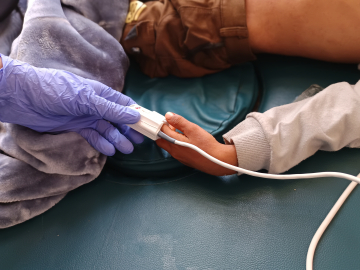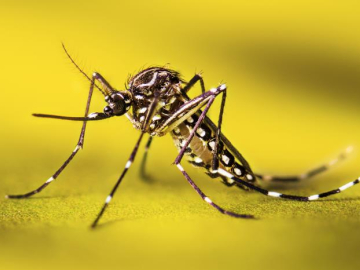Learning from the “Near Misses”
It’s impossible to ignore COVID-19. The near misses, though—the epidemics stopped before they spread—often don’t make the news.
That’s the focus of Epidemics That Didn’t Happen, an interactive digital report from Resolve to Save Lives. It lifts up the success stories—like Nigeria’s swift containment of a 2017 monkeypox outbreak, and Kenya’s shutdown of an anthrax outbreak in 2019—and pulls out valuable lessons.
Amanda McClelland, senior vice president of Resolve to Save Lives, an initiative of Vital Strategies, shared some key insights from the report with GHN via an email Q&A.
How did you zero in on the countries chosen for this report?
For the non-COVID case studies, we wanted to highlight actions from around the world that illustrated a range of preparedness and response strategies (the key preparedness factors) and different diseases.
Resolve to Save Lives hosted a call for submissions to share the important work that the epidemic preparedness community has done. The report was originally slated to be published in early 2020, but in light of COVID-19, we decided to postpone release and include COVID-19 success stories as well.
Are there lessons Brazil could have drawn from its own swift containment of yellow fever in 2016 to avoid some of the terrible suffering it’s facing now with COVID-19?
Strong national and sub-national risk planning and assessment, an integrated vaccination plan including federal, state and municipal levels, and a sophisticated analysis of yellow fever in humans and animals—all together helped control the outbreak and prevent a major epidemic in Brazil.
Brazil demonstrated strong risk assessment and planning in its response to yellow fever, but the fact is that bad politics can undermine good public health. Good public health capacity can be undermined by bad political leadership. Good epidemic detection and response requires technical skill, operational excellence and engaged and science based political decision making.
Our case study on Africa CDC’s continent-wide leadership and strong governance illustrates this point.
Do Mongolia, Senegal, and Vietnam share any common factors in their successful responses to the pandemic? Mongolia, Senegal and Vietnam all demonstrated a strong impetus to take swift, strategic action. Senegal and Vietnam both had strengthened their preparedness systems—Senegal due to Ebola and Vietnam due to SARS—but it was early action that really allowed them to manage the initial wave of COVID-19.
Some of the measures that helped suppress the pandemic also inflamed protests over civil liberties—spurring some leaders in Mongolia to resign, for example. How can governments find the right balance?
The short answer is that it’s quite tough to find the balance between restrictive measures that keep communities safe from COVID-19 but cause secondary impacts including loss of income and social isolation. Mongolia is an example of those challenges. Mongolia took early and decisive action that protected the community and essentially blocked the introduction of COVID-19 to the country—despite its proximity to the pandemic’s epicenter.
Our report highlights how early action, based on risk, can save lives. In Mongolia’s case, that meant addressing the outbreak immediately—recommending masks, setting up facilities for quarantine and isolation, scaling up hospital capabilities, creating a vigorous contact tracing system and scaling up testing. There is no one-size-fits-all approach.
What are the most important big picture lessons that countries with more flawed responses should take away?
Preparedness works, but it also requires action in the face of a risk. Devastating human and economic losses can be avoided. Sustained investments that improve health systems, coordination and communication can support the structures that are needed to find, stop and prevent outbreaks before they spread. Leaders around the world must act, follow the science and work with public health teams and communities to effectively control outbreaks. This means increased prioritization of—and sustained investment in—countries’ ability to prepare and respond; recognize and emulate strong examples set by countries around the world; and prioritize timeliness of early warning and response systems.
Join the 50,000+ subscribers in 170+ countries who rely on Global Health NOW summaries and exclusive articles for the latest public health news. Sign up for our free weekday newsletter, and please share the link with friends and colleagues.
A Red Cross worker in Narok, Kenya, where an anthrax outbreak in 2019 was swiftly contained. Image courtesy of the International Federation of Red Cross and Red Crescent Societies / The Kenya Red Cross Society





